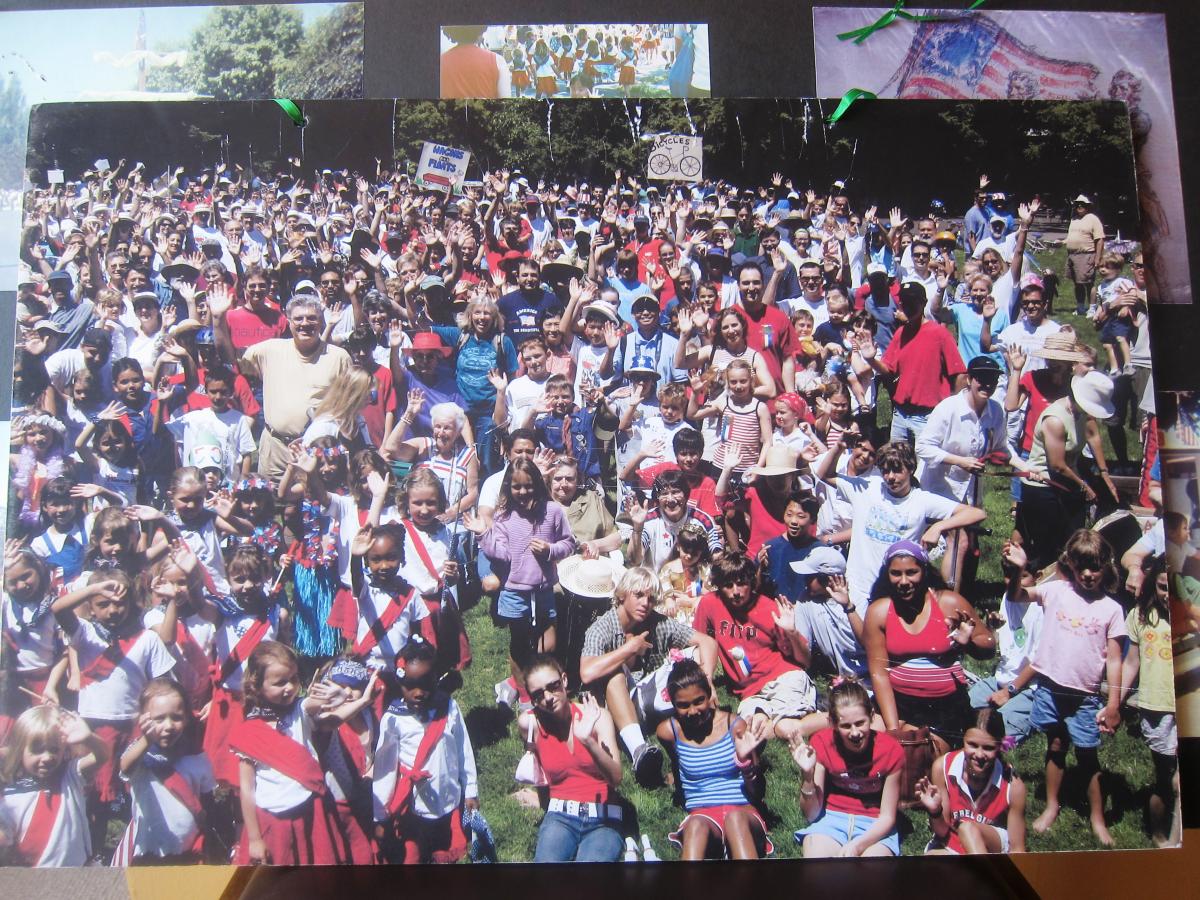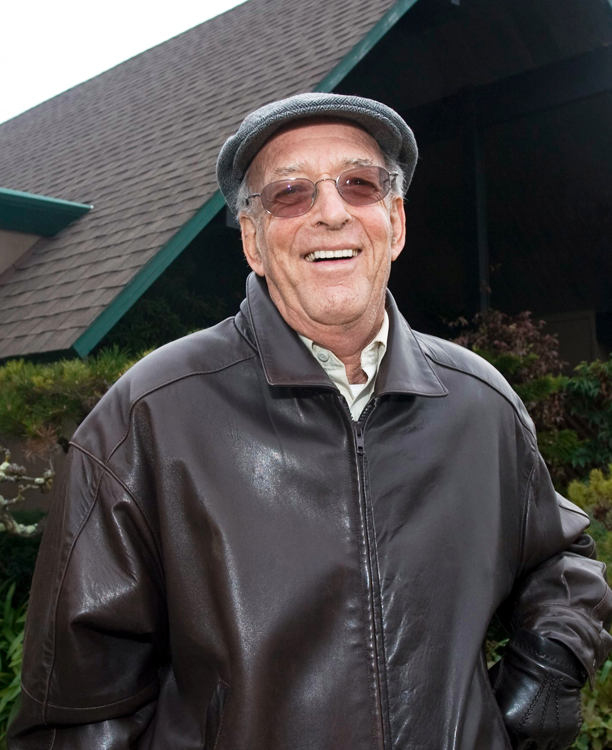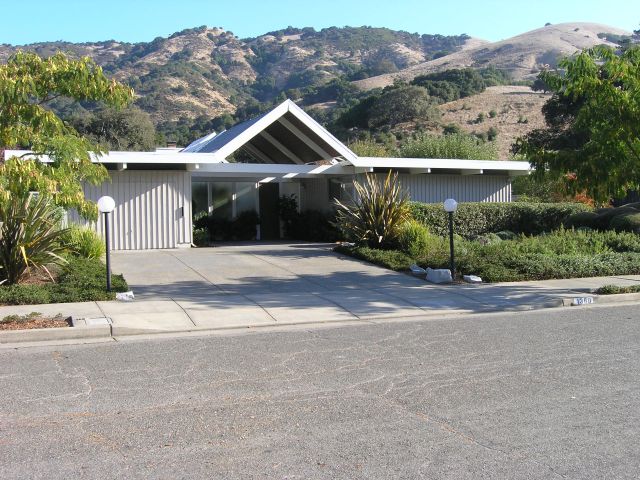
Building An Eichler Bookshelf: Race & Housing
 |
|
|
Today most historically minded Eichler fans know that Joe Eichler sold his homes to racial minorities before open housing was required by state law and before any of his competitors did. But a slim, 23-page booklet available in better research libraries brings the story to life.
In it, Ned Eichler, Joe’s son, presents a story that is more prosaic than heroic – though it is tinged with drama and threats of violence, and shows a strong commitment on the part of Eichler Homes and its leaders not to be pushed around by racist bullies.
When Ned was first asked by a would-be black homebuyer if Eichler Homes would sell her and her husband a home, back in 1954, several years after the firm had gone into business, his answer was not, “Of course, if you can afford one.”
“Well, frankly, I said, the issue had never come up, and I would like to talk to my father about it.”
Joe’s reaction was swift – and impatient. “Why are you bothering me about this? I haven’t got time for these little problems,’” Joe told his son.
Ned continues: “I went back to the people and said, OK, pick a house, make a deposit, and we will put it through the regular procedures.”
 |
|
|
The pamphlet, ‘Race and Housing: An Interview With Edward P. Eichler, President, Eichler Homes, Inc.,’ was published in 1964, “one of a series of interviews on the American Character, Center for the Study of Democratic Institutions.”
Ned at the time was chairman of Governor Pat Brown’s advisory committee on housing, and a member of the board of the National Housing Conference.
The Center noted that “Eichler is now the country’s largest builder of suburban houses in the $20,000-$25,000 range,” with annual sales exceeding $19 million.
“More than ten years ago Eichler Homes quietly ruled out racial restriction on its sales. Orientals bought homes in some of the first Eichler subdivisions in 1950, and in 1954 the first sale was made to a Negro family,” the editor wrote in an introduction. “The open occupancy policy was voluntarily adopted well before the enactment of California’s fair housing legislation.”
The interview discusses Eichler selling to both Asians and African Americans, who were often denied access to housing at the time. Unspoken is that, in the New York area, where the Jewish Eichler family originated, sales to Jews were often blocked in many suburban communities.
Ned recalled that when the first Asian family sought a home, “There were some people in the neighborhood who got a little upset, but it was nothing of any great proportion.”
The sale did not cut into Eichler Homes’ business. “In the next couple of years we sold to a lot of Orientals here and there,” Ned said, adding “it was such a minor issue that we didn’t think about it one way or the other, and we were never aware of any community reaction.”
As far as selling to African Americans, “the first instance I personally know about was 1954,” Ned said. It was in Palo Alto’s Greenmeadow, a higher priced neighborhood than most, and one that was selling well.
 |
|
|
“Do you discriminate in the sale of your houses?” the woman asked on the phone. “Do you sell houses to minorities?”
“Are you a member of a minority asking if you can buy a house, or are you asking this for academic reasons?” Ned responded.
The woman, a nurse, and her husband, a Stanford scientist, had two children. Once Joe gave the go-ahead they selected a house.
“A few people called; a few talked to me with a bit of hostility,” Ned recalled. “They were disturbed about property values, but they were also somewhat defensive in disclaiming prejudice. I said to most of them that we felt that when we sold a federally insured and financed unit, even though the law was not being enforced, we were required to sell to any qualified buyer. I also added that we recognized most builders were not doing this.”
One neighbor asked Eichler to buy his house back. Otherwise, “there was flat out nothing. Everything went smoothly.”
“Negro occupancy proved no barrier to future sales or resales,” Ned said.
Things proved tougher a year later in San Rafael when a Negro radiologist and his family bought a home. The ensuing tumult made the local papers, and Ned was surprised who the first neighbor was who complained. “What are you doing to me?” the man complained. “I have all my life’s savings in my house.”
 |
|
|
“He was an artist,” Ned said, “and my prejudices were that it was unlikely for an artist to have this kind of reaction.”
Fear spread. “This is getting serious,” an Eichler salesman told Ned. “There are about twenty people up here who are very upset. There are meetings. There are two or three major leaders. There’s going to be trouble.”
When Ned met with the group, he said, “The ringleader was a definite psychopath. He threatened me physically.”
At the next meeting Joe was there. “My father told them, in substance, that he was damned if they were going to tell him what to do.”
Once the family moved in, though, trouble ended.
Eichler won a certain renown for selling to any qualified buyer, but the company never sought the publicity, Ned said. “We tried consciously to minimize all publicity, and carry on the policy as a normal way of doing business.”
“I believe that the race question is the single biggest block to advancement in this society.”
- ‹ previous
- 81 of 677
- next ›



